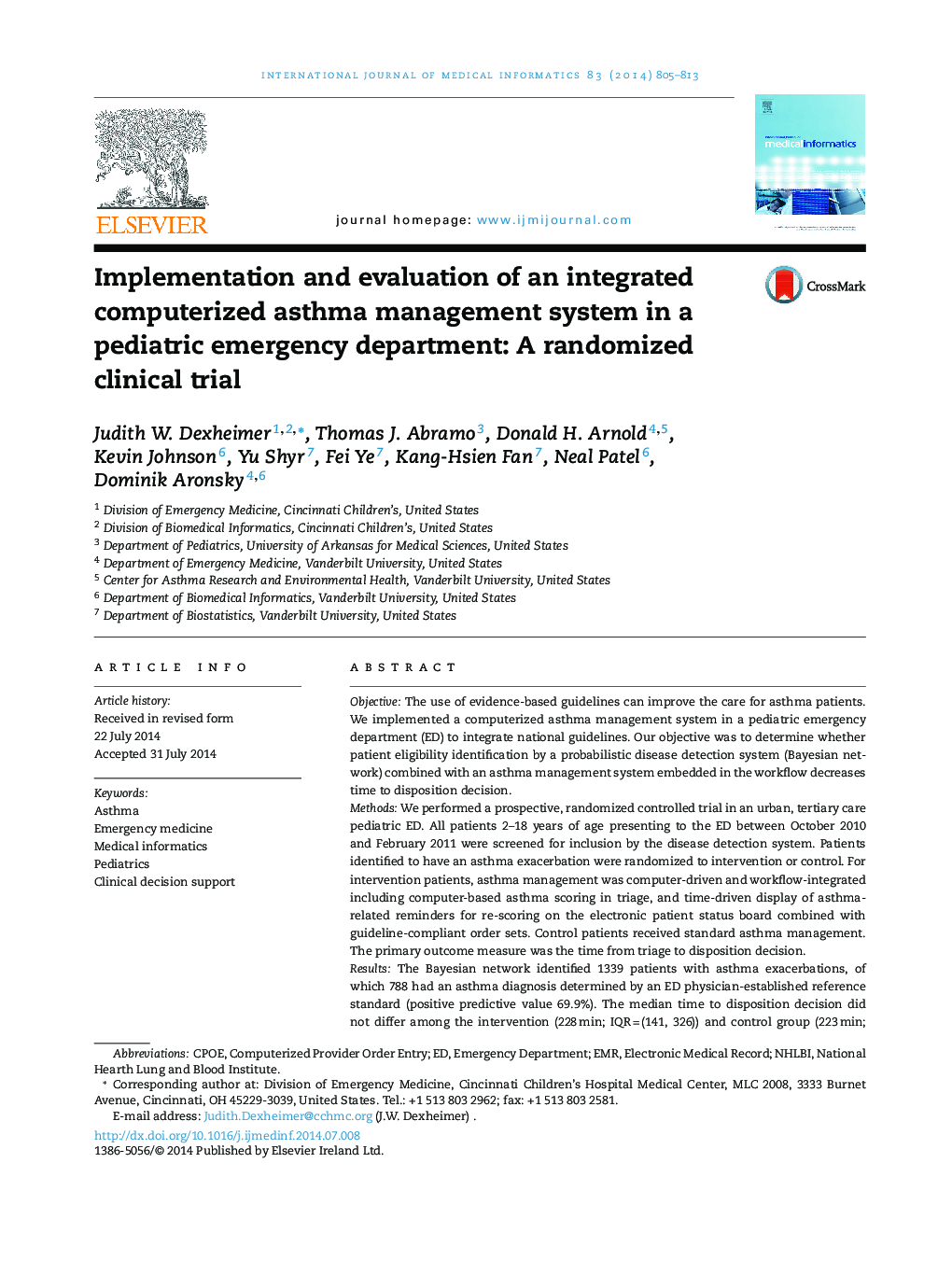| Article ID | Journal | Published Year | Pages | File Type |
|---|---|---|---|---|
| 516491 | International Journal of Medical Informatics | 2014 | 9 Pages |
•National asthma guidelines can improve care.•Automatic patient identification can be used to drive guideline initiation.•Despite integration with the EMR, a computerized asthma management system did not significantly improve time to disposition.
ObjectiveThe use of evidence-based guidelines can improve the care for asthma patients. We implemented a computerized asthma management system in a pediatric emergency department (ED) to integrate national guidelines. Our objective was to determine whether patient eligibility identification by a probabilistic disease detection system (Bayesian network) combined with an asthma management system embedded in the workflow decreases time to disposition decision.MethodsWe performed a prospective, randomized controlled trial in an urban, tertiary care pediatric ED. All patients 2–18 years of age presenting to the ED between October 2010 and February 2011 were screened for inclusion by the disease detection system. Patients identified to have an asthma exacerbation were randomized to intervention or control. For intervention patients, asthma management was computer-driven and workflow-integrated including computer-based asthma scoring in triage, and time-driven display of asthma-related reminders for re-scoring on the electronic patient status board combined with guideline-compliant order sets. Control patients received standard asthma management. The primary outcome measure was the time from triage to disposition decision.ResultsThe Bayesian network identified 1339 patients with asthma exacerbations, of which 788 had an asthma diagnosis determined by an ED physician-established reference standard (positive predictive value 69.9%). The median time to disposition decision did not differ among the intervention (228 min; IQR = (141, 326)) and control group (223 min; IQR = (129, 316)); (p = 0.362). The hospital admission rate was unchanged between intervention (25%) and control groups (26%); (p = 0.867). ED length of stay did not differ among intervention (262 min; IQR = (165, 410)) and control group (247 min; IQR = (163, 379)); (p = 0.818).ConclusionsThe control and intervention groups were similar in regards to time to disposition; the computerized management system did not add additional wait time. The time to disposition decision did not change; however the management system integrated several different information systems to support clinicians’ communication.
